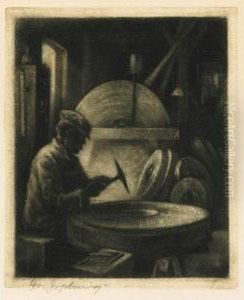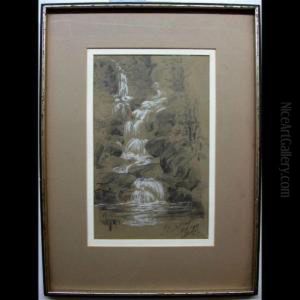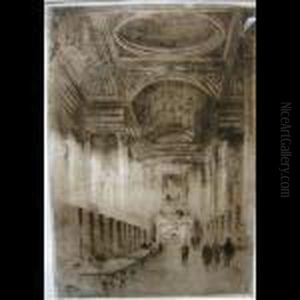Frederic Waistell Jopling Paintings
Frederic Waistell Jopling was an English artist born in the mid-19th century, specifically in 1850. His contributions to the world of art span across various mediums, but he is particularly renowned for his work in etching and watercolor. Jopling's era was one of great innovation and change, both in the broader context of the industrial revolution and within the arts, as new movements and techniques emerged.
Jopling's artistic journey was deeply influenced by the vibrant cultural scene of Victorian England, a period marked by a keen interest in both the technological advancements of the time and a nostalgic fascination with the past. This duality is often reflected in Jopling's work, which can oscillate between modernity and tradition. Despite living in an era where the art world was predominantly male-dominated, Jopling managed to carve out a niche for himself, thanks to his distinctive style and the quality of his craftsmanship.
Throughout his career, Jopling was involved in various artistic circles and movements, which further enriched his work. He was known for his detailed etchings and watercolors, which often featured landscapes, urban scenes, and figures. His ability to capture the essence of his subject matter with precision and sensitivity earned him praise and recognition among his contemporaries.
Jopling's legacy, though perhaps not as widely recognized as some of his peers, remains significant in the context of 19th-century British art. His contributions to the fields of etching and watercolor painting are particularly noteworthy, offering valuable insights into the artistic trends and techniques of his time. Frederic Waistell Jopling passed away in 1945, leaving behind a body of work that continues to be appreciated by art historians and enthusiasts alike.


